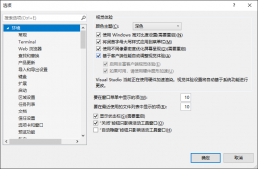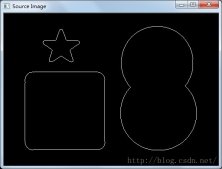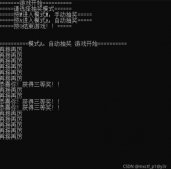cocos new 出新的项目之后,仔细阅读代码,才发现了一句3.0区别于2.0的代码:
|
1
2
3
4
|
auto closeItem = MenuItemImage::create( "CloseNormal.png", "CloseSelected.png", CC_CALLBACK_1(HelloWorld::menuCloseCallback, this)); |
2.0内的代码用的不是CC_CALLBACK_1而是menu_selector.
CC_CALLBACK系列是3.0基于c++11的特性新增的。CC_CALLBACK系列的定义如下:
|
1
2
3
4
5
|
// new callbacks based on C++11#define CC_CALLBACK_0(__selector__,__target__, ...) std::bind(&__selector__,__target__, ##__VA_ARGS__)#define CC_CALLBACK_1(__selector__,__target__, ...) std::bind(&__selector__,__target__, std::placeholders::_1, ##__VA_ARGS__)#define CC_CALLBACK_2(__selector__,__target__, ...) std::bind(&__selector__,__target__, std::placeholders::_1, std::placeholders::_2, ##__VA_ARGS__)#define CC_CALLBACK_3(__selector__,__target__, ...) std::bind(&__selector__,__target__, std::placeholders::_1, std::placeholders::_2, std::placeholders::_3, ##__VA_ARGS__) |
可以看出,CC_CALL_BACK系统后的数字,表示函数指针的参数个数。明白了这一点,选择CC_CALLBACK时,就不会出错鸟。
而看示例代码时,还会发现一个有意思的使用方法:
|
1
|
listener->onTouchesBegan = CC_CALLBACK_2(Layer::onTouchesBegan, this); |
此时不禁要问onTouchesBegan又是啥,为啥不能直接函数指针赋值呢?
看定义就能明白了
|
1
|
std::function<void(const std::vector<Touch*>&, Event*)> onTouchesBegan; |
因为CC_CALLBACK系列是std::bind,而onTouchesBegan是std::function来定义的。那么std::bind和std::function又有什么区别呢?
有博文说:
function模板类和bind模板函数,使用它们可以实现类似函数指针的功能,但却比函数指针更加灵活,特别是函数指向类的非静态成员函数时。
std::function可以绑定到全局函数/类静态成员函数(类静态成员函数与全局函数没有区别),如果要绑定到类的非静态成员函数,则需要使用std::bind。
标准库函数bind()和function()定义于头文件<functional>中(该头文件还包括许多其他函数对象),用于处理函数及函数参数。
std::bind绑定器
- 将函数、成员函数和闭包转成function函数对象
- 将多元(n>1)函数转成一元函数或者(n-1)元函数。
bind()接受一个函数(或者函数对象,或者任何你可以通过"(...)"符号调用的事物),生成一个其有某一个或多个函数参数被“绑定”或重新组织的函数对象。(译注:顾名思义,bind()函数的意义就像它的函数名一样,是用来绑定函数调用的某些参数的。)例如:
|
1
2
3
|
int f(int, char, double);auto ff = bind(f, _1, 'c', 1.2); // 绑定f()函数调用的第二个和第三个参数,返回一个新的函数对象为ff,它只带有一个int类型的参数int x = ff(7); // f(7, 'c', 1.2); |
参数的绑定通常称为"Currying"(译注:Currying---“烹制咖喱烧菜”,此处意指对函数或函数对象进行加工修饰操作), "_1"是一个占位符对象,用于表示当函数f通过函数ff进行调用时,函数ff的第一个参数在函数f的参数列表中的位置。第一个参数称为"_1", 第二个参数为"_2",依此类推。例如:
|
1
2
3
|
int f(int, char, double);auto frev = bind(f, _3, _2, _1); // 翻转参数顺序int x = frev(1.2, 'c', 7); // f(7, 'c', 1.2); |
此处,auto关键字节约了我们去推断bind返回的结果类型的工作。
我们无法使用bind()绑定一个重载函数的参数,我们必须显式地指出需要绑定的重载函数的版本:
|
1
2
3
4
5
|
int g(int);double g(double);auto g1 = bind(g, _1); // 错误:调用哪一个g() ?auto g2 = bind( (double(*)(double))g, _1); // 正确,但是相当丑陋 |
|
1
2
3
4
5
6
7
8
9
10
11
12
13
14
|
void H(int a);//绑定全局函数auto f11 = std::bind(H, std::placeholders::_1);auto的类型实际上是std::function<void(int)>//绑定带参数的成员函数std::function<void (char*, int)> f = std::bind(&ReadHandler::ConnectPreProcess, this, std::placeholders::_1, std::placeholders::_1);//三元函数转换成一元函数int f(int, char, double);// 绑定f()函数调用的第二个和第三个参数,// 返回一个新的函数对象为ff,它只带有一个int类型的参数auto ff = bind(f, _1, ‘c', 1.2); int x = ff(7); |
自己写代码示例如下:
|
1
2
3
4
5
6
7
8
9
10
11
12
13
14
15
16
17
18
19
|
int Func(int x, int y);auto bf1 = std::bind(Func, 10, std::placeholders::_1);bf1(20); ///< same as Func(10, 20)int HelloWorld::AddFunc( int a, int b ){ return a + b;}bool HelloWorld::init(){ auto bf2 = std::bind(&HelloWorld::AddFunc,this , std::placeholders::_1, std::placeholders::_2 ); auto result1 = bf2(10, 20); ///< same as a.Func(10, 20) std::function< int(int)> bf3 = std::bind(&HelloWorld::AddFunc, this, std::placeholders::_1, 100); auto result2 = bf3(10); ///< same as a.Func(10, 100)} |
上面的例子中,bf1是把一个两个参数普通函数的第一个参数绑定为10,生成了一个新的一个参数的可调用实体体; bf2是把一个类成员函数绑定了类对象,生成了一个像普通函数一样的新的可调用实体; bf3是把类成员函数绑定了类对象和第二个参数,生成了一个新的std::function对象。看懂了上面的例子,下面我们来说说使用bind需要注意的一些事项:
(1)bind预先绑定的参数需要传具体的变量或值进去,对于预先绑定的参数,是pass-by-value的
(2)对于不事先绑定的参数,需要传std::placeholders进去,从_1开始,依次递增。placeholder是pass-by-reference的
(3)bind的返回值是可调用实体,可以直接赋给std::function对象
(4)对于绑定的指针、引用类型的参数,使用者需要保证在可调用实体调用之前,这些参数是可用的
(5)类的this可以通过对象或者指针来绑定
std::function
它是函数、函数对象、函数指针、和成员函数的包装器,可以容纳任何类型的函数对象,函数指针,引用函数,成员函数的指针。
以统一的方式处理函数、函数对象、函数指针、和成员函数。允许保存和延迟执行函数。
函数和成员函数作为function
function是一个拥有任何可以以"(...)"符号进行调用的值的类型。特别地,bind的返回结果可以赋值给function类型。function十分易于使用。(译注:更直观地,可以把function看成是一种表示函数的数据类型,就像函数对象一样。只不过普通的数据类型表示的是数据,function表示的是函数这个抽象概念。)例如:
|
1
2
3
4
5
6
7
8
9
10
|
typedef std::function<float (int x, int y)> f ;// 构造一个函数对象,它能表示的是一个返回值为float,两个参数为int,int的函数 struct int_div { // 构造一个可以使用"()"进行调用的函数对象类型 float operator() (int x, int y) const { return ((float)x)/y; };};void HelloWorld::testing(){ f f1= int_div(); // 赋值 auto result3 = f1( 10, 2);} |
成员函数可被看做是带有额外参数的自由函数:
|
1
2
3
4
5
6
7
8
9
10
11
12
13
14
15
16
17
|
struct int_div { // 构造一个可以使用"()"进行调用的函数对象类型 float operator() (int x, int y) const { return ((float)x)/y; }; int int_div_fun( int x ){ return x; };};typedef std::function<int (int_div*, int)> f_2;bool HelloWorld::init(){ f_2 f2 = std::mem_fn(&int_div::int_div_fun); // 指向成员函数 int_div int_div_object; int v = f2(&int_div_object, 5); // 在对象x上用参数5调用X::foo() std::function<int (int)> ff = std::bind( f2, &int_div_object, std::placeholders::_1); // f的第一个参数是&x v = ff(5); // 调用x.foo(5)} |
ps:被vs2012的bug给坑了。因为看网上的代码于是刚开始第9行是这么写的:f_2 f2 = &int_div::int_div_fun;
然后就报错误:Error 1 error C2664: 'std::_Func_class<_Ret,_V0_t,_V1_t>::_Set' : cannot convert parameter 1 from '_Myimpl *' to 'std::_Func_base<_Rx,_V0_t,_V1_t> *'
查了一下,vs2010没有这个编译错误,但是2012有。2012必须得加上std::mem_fn才能编译。
可以用function取代函数指针。因为它可以保存函数延迟执行,所以比较适合作为回调函数,也可以把它看做类似于c#中特殊的委托,只有一个成员的委托。
|
1
2
3
4
5
6
7
8
9
10
11
|
struct int_div { // 构造一个可以使用"()"进行调用的函数对象类型 float operator() (int x, int y) const { return ((float)x)/y; }; int int_div_fun( int x ){ return x; }; int_div( std::function<void()>& f ):m_callback(f){}; void Notify() { m_callback(); } std::function<void()> m_callback;}; |
function还可以作为函数入参,这样可以在函数外部控制函数的内部行为了,让我们的函数变得更加灵活。
|
1
2
3
4
5
6
7
8
9
10
11
12
13
14
15
16
17
18
19
20
21
22
23
24
25
|
void Foo(int x, std::function<void(int)>& f){ if(x%2==0) f(x);}void G(int x){ cout<<x<<endl;}void H(int x){ cout<<x+2<<endl;}void TestFoo(){ auto f = std::bind(G, std::placeholders::_1); Foo(4, f); //在Foo函数外面更改f的行为 f = std::bind(H, std::placeholders::_1); Foo(4, f);} |
c++11中推出function是为了泛化函数对象,函数指针,引用函数,成员函数的指针,让我们可以按更统一的方式写出更加泛化的代码;推出bind是为了替换和增强之前标准库的bind1st和bind2st,让我们的用起来更方便
到此这篇关于C++ 11 std::function和std::bind使用详解的文章就介绍到这了,更多相关C++ 11 std::function和std::bind内容请搜素服务器之家以前的文章或下面相关文章,希望大家以后多多支持服务器之家!
原文链接:https://www.cnblogs.com/DswCnblog/p/5630067.html














